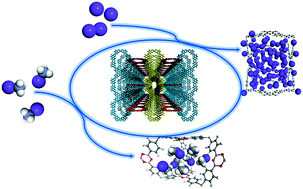Computational screening of covalent organic frameworks for the capture of radioactive iodine and methyl iodide†
Abstract
Effective capture of radioactive iodic contaminants from nuclear wastes is of great importance for public safety as well as the secure utility of nuclear energy. In this work, a computational study was performed to systematically evaluate the performance of 187 experimentally reported covalent organic frameworks (COFs) for gaseous I2 and CH3I adsorption under real industrial conditions. The results show that 3D-COFs present better performance than 2D-COFs for both I2 and CH3I adsorption. 3D-Py-COF was identified with the highest I2 uptake of 16.7 g g−1, outperforming the adsorbents reported to date. In addition, based on the obtained structure–property relationships, a new 3D-COF with an even higher I2 uptake of 19.9 g g−1 was designed. For CH3I adsorption, the pore morphology plays an important role, and 3D-COFs with ctn topology having a pore size of around 9 Å show superiority compared with other COFs. COF-103 was identified as the best material with a CH3I uptake of 2.8 g g−1, which is much higher than those of traditional adsorbents like activated carbons, alumina and zeolites.

- This article is part of the themed collections: Crystalline Materials for Environmental Remediation and Covalent organic frameworks and organic cage structures


 Please wait while we load your content...
Please wait while we load your content...